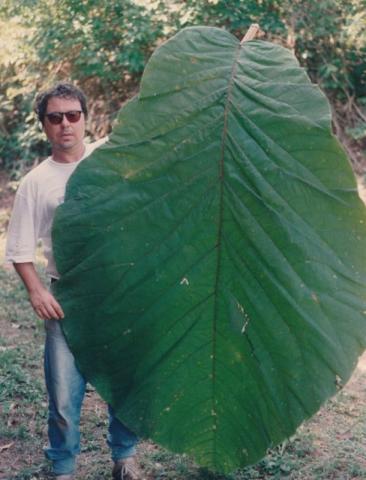
At the National Institute of Amazonian Research (INPA) in Manaus, Brazil, a framed exhibit of a massive dried leaf has been a local attraction for decades. But the complete identity of the tree it belongs to remained unresolved — until now.
Researchers have known that the tree is a species of Coccoloba, a genus of flowering plants that grow in the tropical forests of the Americas. Botanists from INPA first encountered an individual of the unknown Coccoloba tree in 1982 while surveying the Madeira River Basin in the Brazilian Amazon. They spotted more individuals of the plant over subsequent expeditions in the 1980s. But they couldn’t pinpoint the species at the time. The individual trees weren’t bearing any flowers or fruits then, parts that are essential to describing a plant species, and their leaves were too large to dehydrate, press and carry back to INPA. The researchers did take notes and photographs.
In 1993, botanists managed to finally collect two large leaves from a tree in the state of Rondônia, which they then framed for public viewing at INPA. “The species became locally famous, but due to the lack of reproductive material it could not be described as a new species for science,” Rogério Gribel, a researcher at INPA, told Mongabay in an email.

